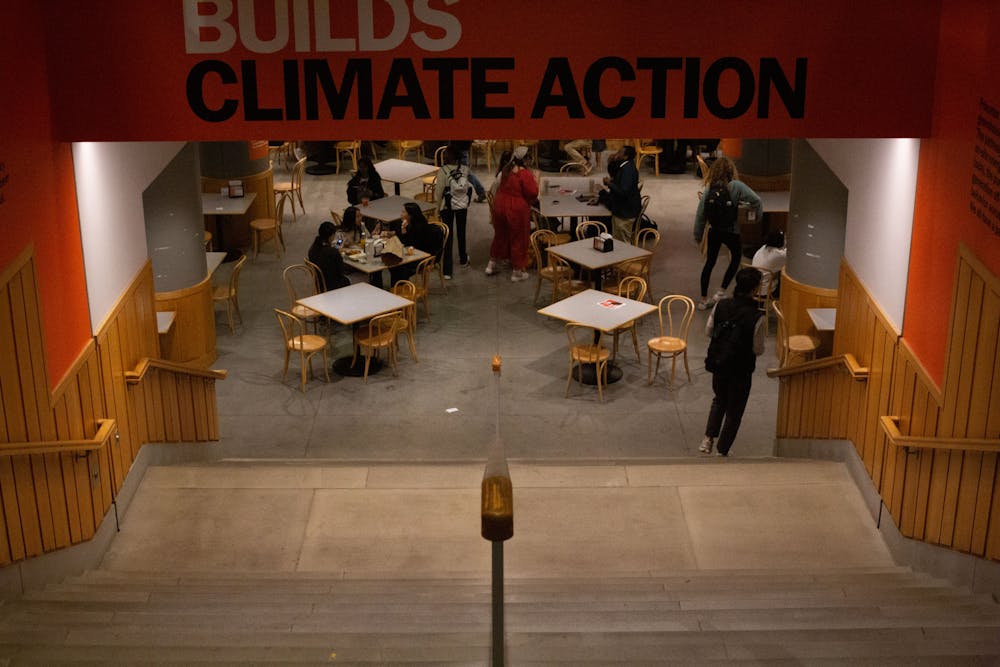It’s no secret that Frist Campus Center’s late meal is a valued addition to undergraduate student dining plans. Following recent increases in hours and allowance, students can now spend up to $10.25 per meal on a variety of grab-and-go lunch and dinner options. This allows students to eat on the move and outside of dining hall hours, which is very convenient for students with busy schedules. Students are presented with a plethora of options for lunch and dinner — from a grill to a panini bar to an Asian food station — which enhances the system’s popularity. In fact, with the change in food options this fall semester, Frist late meals have become such a popular choice among students that many have noted how crowded Frist often becomes.
As construction has accelerated, the University has unofficially put forward Frist as a supplementary dining hall and convenient on-the-go location for the student body. However, some students — including myself — have noticed that the changes in range of dining choices are not all positive. With changes over the summer such as the elimination of the salad bar and burrito bowl station, the new late meal options have become markedly more restrictive for vegan and vegetarian students.
In a 2021 student blog post, a senior described Princeton dining as “very accommodating” to vegan preferences. However, the University has a fundamental responsibility to provide more options — especially as the number of vegetarian and vegan students might continue to expand in the future. After all, vegans and vegetarians make up a sizable chunk of the student population, with eight percent of the Class of 2027 identifying as vegan or vegetarian. Beyond Princeton, 1.5 billion members of the global population do not or cannot eat meat. In particular, college students are far more likely to follow a vegetarian or vegan diet compared to the average citizen. As a result, it is vital to provide fulfilling and nutritionally balanced vegetarian and vegan options for students, with a wide variety of proteins, carbohydrates, vegetables, and fruits. The offering of such options would also improve the inclusivity of our dining spaces for students with dietary restrictions or intolerances.
At present, the number of viable vegetarian and vegan options provided by late meal is quite limited. In order to investigate, I went to Frist at around 2:30 p.m. on Monday to check out the variety of the dining options firsthand. At the panini station, although there were two meat options (in the form of roast beef and chicken sandwiches), there were no plant-based options displayed for students. Similarly, although the pasta station offered chicken additions, no forms of plant-based proteins were available for students to order, meaning vegetarians and vegans who want pasta may have to sacrifice the nutritional value of their meal. There were only a couple of vegan snack options at the “Grab and Go” section, such as Ticos smoothies, cups of vegetables, hummus, and sushi rolls — though very few of these options actually contain protein. Additionally, if a student were to get multiple snacks, they might easily exceed the allotted $10.25 allowance — meaning they would have to pay the rest with their own money. Finally, at the grill, they provide only one vegan option and two vegetarian options.
Overall, by my count, the Monday late meal only offered four hot meal options for vegans — and of the four, only three contained a form of protein. The grill station offered two additional vegetarian meals, both of which met nutritional requirements and included plenty of protein and carbohydrates. However, these options contained milk, and consequently were not friendly to vegans nor to students with lactose intolerances. Although there were some alternatives directed at vegans and vegetarians, these offerings were severely lacking when compared to the range of possibilities for other students, who are able to choose from eight grill options, three salad bar proteins, two Asian bar proteins, two pasta bar options, two panini options, and dozens of Grab and Go options. If students have additional dietary restrictions beyond being vegetarian or vegan, their options are only further limited.
Late meal could easily incorporate more nutritious, vegetarian- and vegan-friendly changes to ensure that plant-based and dietary options are always available to the student body. For example, a vegetarian entrée in the panini section or more high-protein meals in the Grab and Go section — such as a chickpea salad or protein shakes — would provide a more diverse range of suitable foods. Potential meat alternatives, such as tofu, seitan, and “beyond” options should be explored for the pasta bar. In terms of more long-term changes, consider the restoration of the salad bar, which previously provided students with protein-dense options up until last year. The implementation of such options could easily improve accessibility for students with dietary restrictions.
The current options are insufficient for vegetarian and vegan students. College students are recommended to eat a range of proteins, carbohydrates and fruits every day. Thus, campus dining should provide a wide variety of such options. It’s not fair that Frist dining options are so disproportionately restricted. In order to close this gap, Frist late meal needs to offer more options for vegetarian and vegan students. For particularly busy students or those with back-to-back afternoon classes, Frist is often the only lunch option, and it can quickly become busy as options start to run out, making it even more difficult for vegetarian and vegan students to properly fuel themselves. Students deserve adequate dining options, first and foremost.
Liz Reyes is a second-year contributing columnist planning to major in Neuroscience. She is from Cherry Hill, N.J. and can be reached at lr9325[at]princeton.edu.








